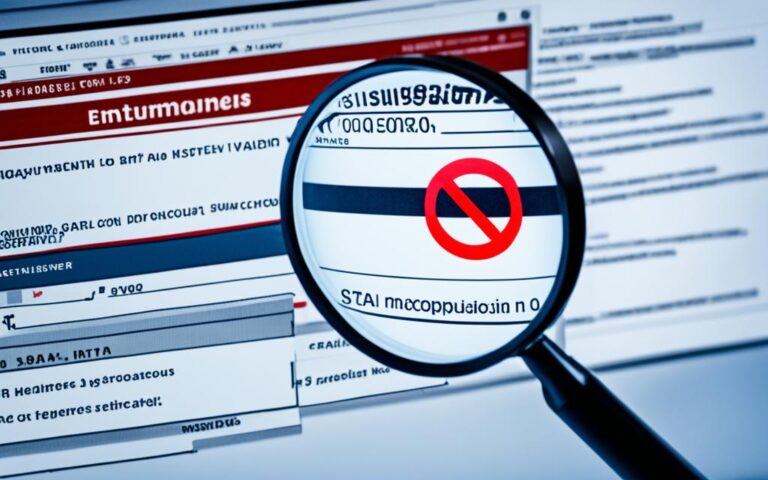Overcoming the Technical Challenges of Secure Data Deletion
In today’s digital landscape, organizations face numerous challenges when it comes to securely deleting data. The implementation of data deletion frameworks is essential to comply with the General Data Protection Regulation (GDPR) and protect individuals’ privacy. However, these frameworks come with their fair share of technical hurdles that must be overcome.
Data deletion is not as straightforward as pressing a delete button or formatting a drive. There are several complexities involved, from the lack of a clear deletion definition to the absence of a standardized template for deletion concepts. Organizations also need to develop tailored documentation, deal with ambiguity surrounding data retention periods, conduct comprehensive data assessments, and involve the IT department in the process.
In this article, we will explore each of these technical challenges in detail and provide insights on how organizations can overcome them. By understanding these challenges and implementing effective solutions, businesses can ensure secure data deletion and compliance with data protection regulations. Join us as we delve into the intricate world of technical data deletion.
Lack of Explicit Deletion Definition
In order to comply with the General Data Protection Regulation (GDPR), organizations must adhere to strict deletion requirements. However, one of the challenges they face is the lack of an explicit deletion definition provided by the GDPR. This ambiguity often leads to confusion and uncertainty among organizations seeking to ensure compliance.
True compliance with deletion requirements entails achieving data irreversibility, where data becomes permanently inaccessible. Merely designating data as inactive or removing it from active use does not meet the deletion requirements set forth by the GDPR. It is essential to implement processes that render data irreversibly deleted, leaving no possibility for recovery.
While achieving data irreversibility can be complex and resource-intensive, simple deletion processes on drives and databases are usually sufficient to meet the GDPR’s deletion requirements. By implementing robust and secure deletion practices, organizations can ensure that all personal data is permanently and irreversibly removed from their systems.
Key Takeaways:
- The GDPR does not provide a specific definition of “deletion,” leading to confusion among organizations.
- Data irreversibility, where data becomes permanently inaccessible, is essential for compliance with deletion requirements.
- Designating data as inactive or removing it from active use does not meet the GDPR’s deletion requirements.
- Simple deletion processes on drives and databases are usually sufficient to achieve data irreversibility.
“True data irreversibility is crucial. Only by ensuring that data becomes permanently inaccessible can organizations meet the GDPR’s deletion requirements.” – GDPR Compliance Expert
Absence of a Standard Deletion Template
Organizations face significant challenges in developing and implementing deletion frameworks due to the lack of a standardized template. The General Data Protection Regulation (GDPR) provides guidelines for data deletion, but it does not offer clear and specific instructions on the format and structure of a deletion template. This absence of standardized guidance leaves organizations grappling with the complexities of devising effective data deletion processes.
In addition to the GDPR, legal standards such as DIN 66398 and general legal-theoretical texts further add to the complexity. These resources provide valuable insights and principles for data deletion but fail to provide a comprehensive and universally applicable deletion template. This leaves organizations without a clear starting point for designing a deletion framework that aligns with their specific needs and the requirements of the GDPR.
Furthermore, organizations operating in multiple jurisdictions face the additional challenge of establishing a global data deletion framework. Each jurisdiction may have its own set of laws and regulations regarding data protection and deletion, making it even more difficult to develop a standardized template that can be applied across all locations.
Without a standard deletion template, organizations are left to navigate the complexities of crafting their own frameworks, often resulting in inconsistencies and inefficiencies. This not only hampers compliance with the GDPR but also increases the risk of data breaches and regulatory penalties.
GDPR Deletion Template Requirements
While a standardized deletion template may not be available, organizations can still establish effective deletion frameworks by considering the following key requirements:
- Clear and concise instructions: The deletion template should provide clear instructions on the steps to be taken to delete data in compliance with the GDPR. It should outline the necessary procedures, timelines, and responsibilities for different stakeholders involved in the deletion process.
- Data categorization: The template should include a mechanism for categorizing data based on its sensitivity and retention period. This categorization will help organizations prioritize and determine which data should be deleted in accordance with the GDPR requirements.
- Documentation: The template should facilitate the creation of comprehensive documentation that demonstrates compliance with the GDPR’s data deletion obligations. This documentation should record the reasons for deletion, the methods used, and the individuals responsible for executing the deletion process.
- Monitoring and auditing: The template should incorporate mechanisms for monitoring and auditing the deletion process to ensure ongoing compliance. It should enable organizations to track the progress of data deletion and identify any potential gaps or deviations from the established procedures.
Developing a customized deletion template based on these requirements and aligning it with the organization’s specific needs and the GDPR’s mandates can significantly enhance data protection practices and reduce the risk of non-compliance.
Absence of Tailored Documentation
Developing a single, lengthy theoretical document for the deletion concept is impractical. Organizations should focus on developing tailor-made documentation, including a general document outlining fundamental deletion procedures and terminology, as well as specific work instructions for individual departments and IT systems. This approach improves accessibility to relevant information and enhances adherence to the concept.
“Tailor-made documentation allows organizations to provide clear guidelines and instructions tailored to their unique deletion procedures. It ensures that employees have a clear understanding of their responsibilities and the steps involved in the deletion process, promoting consistency and compliance within the organization.”
By creating tailored deletion documentation, organizations can effectively address the challenges associated with secure data deletion. The tailored approach provides clear and concise instructions that are easy to follow, reducing the likelihood of errors and increasing overall efficiency. Additionally, organizations can customize work instructions for specific departments and IT systems, taking into account their unique requirements and workflows.
Example of Tailored Deletion Documentation
| Document Type | Purpose | Contents |
|---|---|---|
| General Deletion Document | Outlines fundamental deletion procedures and terminology |
|
| Department-specific Work Instructions | Provides department-specific guidelines for data deletion |
|
| IT System-specific Work Instructions | Gives detailed instructions for data deletion in various IT systems |
|
Having tailored deletion documentation not only supports compliance with GDPR requirements but also improves overall data management and security practices within the organization. It helps in creating a cohesive and standardized approach to secure data deletion, ensuring that sensitive information is handled with the utmost care.
Ambiguity Surrounding Data Retention Periods
The GDPR does not specify exact deletion periods or timelines for data retention, creating a challenge for organizations when determining the appropriate timeframe to retain data. Without clear guidelines, organizations may struggle to identify when data is no longer necessary and should be deleted.
Developing a robust deletion concept requires collaboration with data protection consultants, legal professionals, and tax consultants. These experts can assist organizations in reviewing retention obligations imposed by statutory laws and regulations.
This complexity is particularly magnified for organizations with vast databases, as they must navigate the intricate landscape of data retention and ensure that no obligations go overlooked.
To navigate through the ambiguity surrounding data retention periods, organizations should:
- Consult with data protection consultants to review the GDPR data retention requirements;
- Collaborate with legal professionals to understand the statutory obligations for retaining specific types of data;
- Engage tax consultants to ensure compliance with retention requirements related to financial data;
- Regularly review and update their data retention policies, taking into account any new laws or regulations that may affect retention periods;
- Implement robust data management systems to track and document data retention periods, ensuring adherence to legal obligations.
Collaboration with Experts
“Developing a deletion concept requires collaboration with data protection consultants, legal professionals, and tax consultants to review retention obligations imposed by statutory laws.” – GDPR Expert
The collaboration with experts in data protection, legal, and tax fields is crucial for organizations seeking clarity on data retention periods. By leveraging the insights of these specialists, organizations can ensure compliance with GDPR data retention requirements and develop a deletion concept that aligns with legal obligations.
By involving experts who understand the nuances of data protection and retention laws, organizations can mitigate the risks associated with data retention and deletion. This collaboration helps organizations strike a balance between regulatory compliance and efficient data management.
Comprehensive Data Assessment
When formulating a data deletion concept, it is crucial for organizations to have a comprehensive understanding of the personal data they process. This involves identifying the types of personal data, its location, purpose, and the relevant departments that have access to it.
Mapping and documenting this information accurately is essential for developing an effective data deletion concept. Regularly updating this data inventory ensures that organizations have the most up-to-date knowledge of the personal data they hold, enabling them to implement appropriate deletion measures.
In order to conduct a comprehensive data assessment, organizations should consider the following steps:
- Identify Personal Data: Determine the various types of personal data that the organization handles, including sensitive personal data. This includes names, addresses, contact details, financial information, and any other personally identifiable information.
- Locate Data Residences: Identify where the personal data is stored within the organization’s systems, including databases, servers, and cloud-based platforms.
- Understand Data Processing Operations: Determine the purpose for which the personal data is processed. This includes understanding the lawful basis for processing, such as consent, legitimate interests, or legal obligations.
- Map Relevant Departments: Identify the departments or individuals within the organization who have access to the personal data. This includes HR, marketing, customer service, or any other department that interacts with personal data.
Benefits of Comprehensive Data Assessment
“A thorough data assessment enables organizations to have a clear picture of the personal data they hold and the processing activities surrounding it. This knowledge forms the foundation for developing robust data deletion concepts that align with legal requirements and ensure the protection of individuals’ privacy rights.” – Data Protection Expert
By conducting a comprehensive data assessment, organizations can:
- Gather accurate information about the personal data they hold, enabling them to make informed decisions about data deletion.
- Identify potential risks and vulnerabilities in their data processing operations, allowing them to take proactive measures to mitigate these risks.
- Facilitate compliance with data protection regulations, such as the GDPR, by having a clear understanding of the personal data they process and the purposes for which it is processed.
- Enhance transparency and accountability within the organization by documenting and maintaining records of their data processing activities.
By conducting a comprehensive data assessment, organizations can develop effective data deletion concepts that protect individuals’ privacy rights and ensure compliance with data protection regulations.
Example of a Data Assessment Table
| Personal Data Category | Data Residences | Purpose of Processing | Relevant Departments |
|---|---|---|---|
| Customer Names | CRM System | Customer Relationship Management | Sales, Marketing |
| Financial Information | Accounting Software | Financial Record Keeping | Finance, Accounts |
| Employee Addresses | HRIS System | Employee Management | HR, Payroll |
Crucial Involvement of the IT Department
The IT department plays a pivotal role in establishing a successful data deletion framework. Their expertise is essential in defining the technical implementation of deletion, whether through manual or automated processes. The IT department is responsible for ensuring that data destruction or anonymization methods are effectively executed, aligning with data protection regulations and guidelines.
Collaboration with other departments is crucial to develop a comprehensive and efficient data deletion process. The IT department needs to work closely with data protection officers, legal experts, and works councils to ensure compliance and proper implementation. This collaborative effort ensures that all aspects, including legal obligations, are considered and incorporated into the data deletion process.
Furthermore, the involvement of the IT department extends beyond technical implementation. They play a vital role in educating other departments about the data deletion framework, ensuring that all stakeholders understand their responsibilities and adhere to the established guidelines. This collaborative approach fosters a culture of data privacy and protection throughout the organization, minimizing the risk of data breaches and non-compliance.
FAQ
What are the main technical challenges organizations face in implementing secure data deletion frameworks?
The main technical challenges organizations face include the lack of a clear deletion definition, absence of a standardized template for deletion concepts, the need for tailored documentation, ambiguity surrounding data retention periods, comprehensive data assessment, absence of a legal basis for data deletion, and crucial involvement of the IT department.
What is the GDPR’s definition of “deletion,” and why is it important to achieve data irreversibility?
The GDPR does not provide an exact definition of “deletion,” causing confusion among organizations. However, true data irreversibility, where data becomes permanently inaccessible, is essential for compliance. Simply designating data as inactive does not meet deletion requirements. Simple deletion processes on drives and databases are usually sufficient to achieve data irreversibility.
Why do organizations struggle to develop and implement deletion frameworks?
Organizations struggle due to the absence of a standardized template for deletion concepts. Legal standards like DIN 66398 and general legal-theoretical texts add to the complexity. Additionally, developing a comprehensive global data deletion framework for company groups with multiple jurisdictions further compounds the challenge.
What approach should organizations take when developing deletion documentation?
Instead of developing a single, lengthy theoretical document for the deletion concept, organizations should focus on developing tailor-made documentation. This includes a general document outlining fundamental deletion procedures and terminology, as well as specific work instructions for individual departments and IT systems. This approach improves accessibility to relevant information and enhances adherence to the concept.
Why is determining data retention periods challenging under the GDPR?
The GDPR does not specify exact deletion periods or timelines for data retention, making it challenging for organizations to determine when data is no longer necessary. Developing a deletion concept requires collaboration with data protection consultants, legal professionals, and tax consultants to review retention obligations imposed by statutory laws. This complexity is magnified for organizations with vast databases and overlooked deletion obligations.
What does a comprehensive data assessment entail for developing a deletion concept?
Formulating a deletion concept requires a comprehensive understanding of the personal data processed by an organization. This entails identifying the types of personal data, where it resides, its purpose, and the relevant departments accessing it. Mapping the exact personal data processed and constantly updating this information is crucial for developing an effective deletion concept.
What role does the IT department play in establishing a data deletion framework?
The IT department plays a pivotal role in establishing a successful data deletion framework. They are responsible for defining the technical implementation of deletion, including manual or automated processes and the destruction or anonymization of data. Collaboration with data protection officers, legal experts, works councils, and other relevant departments is essential. Legal obligations, such as involving Work Councils, may influence the deletion process.













